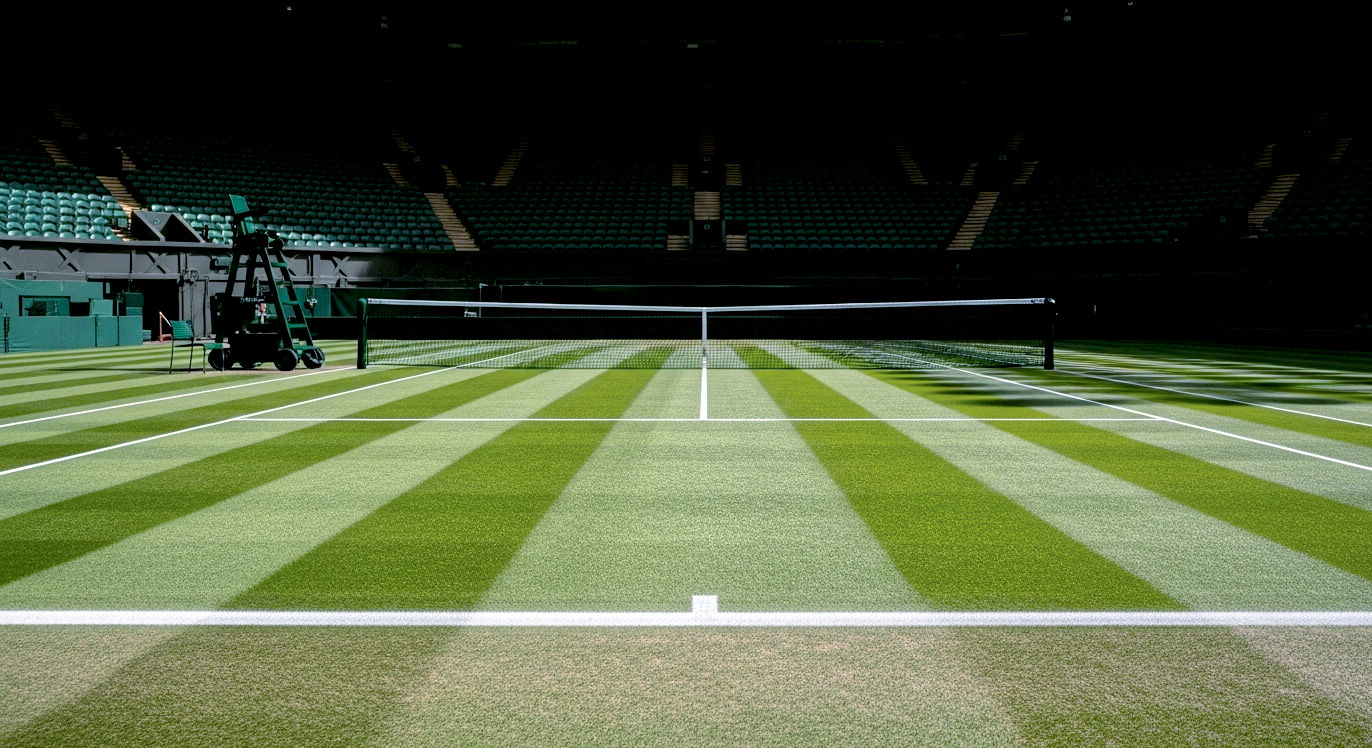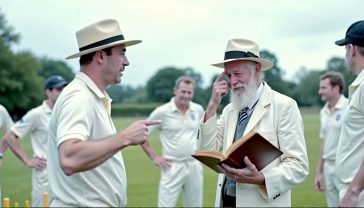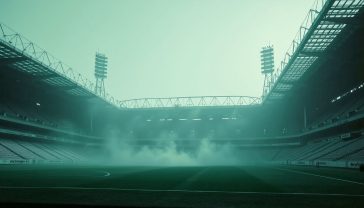The Hallowed Grounds: The Complete Story of the World’s Most Famous Sporting Lawns
An in-depth look at the hallowed turf of Wimbledon, Lord’s, Wembley, and more. Explore the history, science, and iconic moments of these legendary grounds.

This post may contain affiliate links. If you make a purchase through these links, we may earn a commission at no additional cost to you.
Walk onto the Centre Court at Wimbledon on a quiet summer’s morning, and you can almost feel it. It’s a silence filled with the ghosts of epic five-set battles, championship points, and thunderous applause. Stand in the middle of Lord’s Cricket Ground, and you can almost hear the gentle ripple of appreciation for a perfectly timed cover drive. These aren’t just patches of grass; they are stages. They are living, breathing monuments where legends are made and history is written.
From the immaculate stripes of a tennis court to the hallowed turf of a football stadium, the world’s most famous sporting lawns are far more than just playing surfaces. They are the result of science, dedication, and a deep love for sport. They are cared for by guardians—the groundskeepers—who work tirelessly behind the scenes to create the perfect canvas for sporting drama.
This is the story of those grounds. We’ll delve into the secrets buried beneath the surface, explore the science that keeps them pristine, and relive the iconic moments that have made them famous. Forget the players for a moment; it’s time to celebrate the unsung hero of sport: the hallowed ground itself.
The Science of the Sacred Sod: What Makes a Perfect Sporting Lawn?
You might think it’s simple: soil, seed, water, and a bit of sunshine. But creating a world-class sporting surface is a high-tech science, a delicate balancing act between nature and human ingenuity. A pitch that’s too hard can cause injuries, while one that’s too soft can turn into a mud bath after a bit of classic British rain.
It’s Not Just Grass, It’s a Prescription
The first decision is the most important: what type of grass to use? It’s not a one-size-fits-all situation. The choice depends on the sport, the climate, and how much wear and tear the surface will get.
For sports like tennis and cricket, you need a grass that can be cut very short and grow densely. Perennial Ryegrass is the undisputed champion here. It’s tough, recovers quickly, and gives that beautiful, deep green colour we all associate with places like Wimbledon.
Football and rugby pitches need something even more resilient. They often use a special blend of ryegrasses, sometimes mixed with other types like Smooth-stalked Meadow-grass, to create a surface that can withstand 22 players churning it up for 90 minutes.
But the grass is only half the story. The real magic lies beneath. A modern stadium pitch is built in layers, like a giant slice of cake.
- The Base: At the very bottom, there’s usually a layer of gravel or sand for drainage.
- The Undersoil Heating: Many top grounds have a network of pipes that act like central heating for the pitch, keeping the soil at the perfect temperature for grass to grow, even in winter.
- The Rootzone: This is the most important layer. It’s a carefully mixed blend of sand, soil, and other materials that the grass roots grow into. It’s designed to be firm but also allow water to drain away quickly.
The Groundskeeper: The Unsung Hero
The people responsible for these incredible surfaces are the groundskeepers. They are part scientist, part artist, and part magician. Their job is a year-round battle against weather, pests, and the constant demands of the sporting calendar.
They know their turf like a parent knows their child. They can tell if it needs water just by the colour of the blades, or if it needs nutrients by how it feels underfoot. They use a range of high-tech tools, from special mowers that create those perfect stripes to UV lighting rigs that help the grass grow even when it’s covered by a stadium roof.
A groundskeeper’s work is never done. In the summer, they might be mowing every single day. In the winter, they’re fighting to keep the pitch from freezing. And after a match, they’re out there almost immediately, repairing divots and helping the turf to recover. They are the guardians of the green, and without them, the show simply couldn’t go on.
Tennis’s Cathedral: The All England Club, Wimbledon
There is no sporting lawn more famous than Centre Court at the All England Lawn Tennis and Croquet Club, better known simply as Wimbledon. For two weeks every summer, the eyes of the world turn to this perfect rectangle of green in South West London. It’s more than a tennis court; it’s a global icon.
From Croquet Lawn to Global Icon
The club started in 1868, but not for tennis. Its original purpose was croquet. It wasn’t until 1875 that a lawn was set aside for the new, fashionable game of ‘lawn tennis’. The first championship was held in 1877, and a tradition was born.
Wimbledon is the only one of the four major tennis tournaments still played on grass, the sport’s original surface. This is what makes it unique. The grass makes the ball travel faster and bounce lower than on clay or hard courts, favouring players with big serves and attacking styles. The surface itself is a key part of the drama.
The Centre Court: More Than Just a Patch of Grass
The current Centre Court was opened in 1922 and has been the scene of some of the greatest matches in tennis history. It has an almost church-like atmosphere before the crowds arrive. There’s a quiet reverence about the place. Above the players’ entrance is a famous line from Rudyard Kipling’s poem If—: “If you can meet with Triumph and Disaster / And treat those two impostors just the same.” It’s a reminder of the sportsmanship that Wimbledon stands for.
Until 2009, Centre Court was at the mercy of the British weather, with rain delays being a famous part of the Wimbledon experience. The installation of a retractable roof changed all that, guaranteeing play can continue, but some still miss the romance of waiting for the clouds to pass.
The Secret Recipe: 100% Perennial Ryegrass
So, what makes the Wimbledon grass so special? The secret lies in the grass itself. Since 2001, the courts have been sown with 100% Perennial Ryegrass. The groundskeeping team, led by the Head of Courts and Horticulture, believes this is the best species to stand up to the wear and tear of modern, powerful tennis.
The preparation for the tournament is a military operation that starts the moment the previous year’s championship ends.
- The courts are meticulously cared for all year round.
- The grass is kept at a regulation height of exactly 8mm during the tournament. Any shorter and it wouldn’t be as durable; any longer and it would affect the ball’s bounce.
- They are mown and rolled every single day to ensure they are perfectly firm and smooth.
- During the tournament, the courts are even tested for their hardness and how high the ball bounces to make sure they are consistent.
Iconic Moments on the Hallowed Turf
The list of legendary moments on Centre Court is endless. Think of the epic 2008 final between Roger Federer and Rafael Nadal, often called the greatest match ever played, which ended in near darkness. Or Virginia Wade’s victory in 1977, the Queen’s Silver Jubilee year. And of course, Andy Murray ending Britain’s 77-year wait for a men’s singles champion in 2013, a moment of pure national joy.
These moments are woven into the very fabric of the turf. Centre Court isn’t just grass and soil; it’s a repository of memories, triumphs, and heartbreaks.
The Home of Cricket: Lord’s
If Wimbledon is a cathedral of tennis, then Lord’s Cricket Ground in St John’s Wood, London, is the spiritual home of cricket. It’s owned by the Marylebone Cricket Club (MCC), the body that was once the sport’s world governing body. To play at Lord’s is the dream of every cricketer. To score a century or take five wickets here means your name is etched onto the famous Honours Boards in the pavilion forever.
Two Centuries of Cricketing History
Lord’s was founded by Thomas Lord in 1787, though its current ground is the third of his creations, opened in 1814. It’s a place steeped in tradition, from the famous Grade II*-listed Victorian Pavilion to the notoriously strict dress code for MCC members (jackets and ties are a must).
But the most famous feature of the ground itself is the playing surface. In particular, the Lord’s slope. The pitch runs north-west to south-east and has a noticeable slope, dropping around 2.5 metres (over 8 feet) across the playing area.
This slope is not a mistake; it’s a historical quirk from when the ground was first laid out. And it has a huge impact on the game. For bowlers, it creates unusual angles and can make the ball deviate in unexpected ways. For batsmen, it can make judging the line of the ball a nightmare. It’s a unique challenge that makes playing at Lord’s unlike anywhere else in the world.
Maintaining the Perfect Wicket
The Head Groundskeeper at Lord’s has one of the most scrutinised jobs in world sport. The preparation of the cricket ‘square’—the central area where the match pitches are located—is a dark art.
A cricket pitch needs to be incredibly hard and flat to provide a true, consistent bounce for the ball. The process involves mowing the grass incredibly short and then using a series of heavy rollers to compact the clay-based soil underneath. This is done over several days leading up to a match. The groundskeeper’s skill is in knowing exactly how much to roll it and how much moisture to leave in the surface.
- A pitch with a bit of grass left on it will often help the fast bowlers.
- A dry, dusty pitch will crumble as the match goes on, helping the spin bowlers.
- A flat, hard pitch with no grass is a batsman’s paradise.
The groundskeeper can literally influence the outcome of the game with their preparation.
Unforgettable Ashes Clashes and World Cup Finals
Lord’s has been the backdrop for some of cricket’s most dramatic moments. It has hosted the World Cup Final five times, none more dramatic than in 2019. England and New Zealand couldn’t be separated after their 50 overs, and then couldn’t be separated after a ‘super over’. England were crowned champions on a technicality in the most nail-biting finish imaginable.
It’s also the ultimate stage for the oldest rivalry in cricket: The Ashes between England and Australia. The battles fought on this turf, from Ian Botham’s heroics in 1981 to Glenn McGrath’s dominance in the 1990s, are the stuff of legend.
Football’s Coming Home: Wembley Stadium
For football fans in Britain, there is one patch of grass that matters more than any other: the Wembley pitch. The original stadium, with its iconic Twin Towers, was opened in 1923 and was known as the ‘Hallowed Turf’. The new Wembley Stadium, opened in 2007 with its soaring arch, has continued that legacy.
From Twin Towers to Modern Arch
The old Wembley was the venue for some of English football’s greatest triumphs. The “White Horse Final” of 1923, the first FA Cup Final held there, was so over-crowded that a policeman on a white horse had to clear the pitch. It was the scene of England’s only World Cup victory in 1966 and the Matthews Final of 1953.
The new stadium was designed to be the best in the world, and that included the pitch. The challenge was immense. A modern stadium with a steep roof structure can block sunlight and airflow, making it incredibly difficult to grow healthy grass.
The Wembley Pitch: A Carpet Fit for Kings
The solution was a revolutionary hybrid pitch. It’s not artificial grass, but it’s not 100% natural either. The system, often known by brand names like Desso GrassMaster, involves stitching millions of artificial grass fibres 20cm deep into the sandy rootzone.
The natural grass roots then grow and intertwine with these synthetic fibres. Think of it like reinforced concrete for grass. The artificial fibres provide stability and durability, meaning the pitch stays in perfect condition even after a brutal match or a series of concerts. It gives the best of both worlds: the feel and playability of real grass, with the strength of a synthetic surface.
This technology has been so successful that it’s now used at most top-level football and rugby clubs across the UK and the world.
“They Think It’s All Over…”: Moments that Made Wembley
Wembley is the stage for English football’s biggest days: the FA Cup Final, the League Cup Final, and crucial England international matches. It has seen moments of incredible drama. Geoff Hurst’s hat-trick in the 1966 World Cup final, sealed with Kenneth Wolstenholme’s immortal commentary. Gazza’s wonder-goal against Scotland at Euro ’96. The Lionesses’ historic victory at the Women’s Euro 2022, bringing football home for a new generation.
The pitch is central to these memories. A perfect surface allows for fast-flowing, skilful football. A poor pitch can ruin a game and lead to injuries. The groundskeepers at Wembley know that they are preparing the stage for players to make history.
Beyond Britain: Global Theatres of Green
While Britain is home to some of the most famous lawns, other sports around the world have their own sacred grounds.
Golf’s Green Jacket: Augusta National
In the world of golf, nowhere is more revered than Augusta National Golf Club in Georgia, USA, home of the Masters tournament. It is famous for its almost unnatural perfection. The fairways are like green carpets, the greens are as fast as lightning, and the flowers are always in bloom.
The grass here is a mix of types. The fairways are Perennial Ryegrass (overseeded for the tournament), while the greens are a super-smooth species called Bentgrass. The groundskeepers at Augusta are legendary for their attention to detail. Rumour has it they even have a sub-air system under the greens that can suck moisture out to make them firmer and faster.
The most famous stretch of the course is ‘Amen Corner’, holes 11, 12, and 13. It’s here that the Masters is often won or lost, a beautiful but treacherous piece of golfing land that has broken the hearts of many champions.
The “G”: The Melbourne Cricket Ground
In the Southern Hemisphere, the Melbourne Cricket Ground (MCG) is the equivalent of Lord’s and Wembley rolled into one. It’s a colossal stadium that can hold over 100,000 people. It hosts the famous Boxing Day Test match every year, the final of the Australian Football League (AFL), and has even hosted the Olympics.
The challenge for the MCG groundskeepers is creating a surface that can handle two very different sports: cricket in the summer and AFL (a sport played on an oval pitch with much more running and tackling) in the winter. They use portable, drop-in cricket pitches. The cricket wickets are grown off-site and then dropped into the centre of the ground by a crane for the cricket season. It’s an incredible feat of engineering.
The Guardians of the Green: The Future of Sporting Lawns
The pressure to produce perfect playing surfaces has never been greater. With multi-million-pound players and global TV audiences, there is no room for a bad bounce or a muddy goalmouth.
Battling the Elements and Expectations
Climate change is presenting new challenges. Hotter summers and wetter winters make it harder to maintain traditional grass species. At the same time, stadiums are getting bigger, and their roofs are blocking out more natural light.
This is where technology is stepping in.
- Lighting Rigs: Huge mobile rigs with powerful lights are used to provide artificial sunlight to areas of the pitch that are in shadow, ensuring even growth.
- Data Analytics: Sensors in the soil measure moisture, temperature, and nutrient levels, feeding information back to the groundskeepers’ computers so they can give the grass exactly what it needs.
- Hybrid Pitches: As we saw with Wembley, hybrid technology is becoming the standard for elite-level sport, providing a consistently brilliant surface all year round.
A Lasting Legacy
The world’s most famous sporting lawns are more than just fields of play. They are a link between the past, present, and future of sport. They connect us to the legends who played on them decades ago and will be the stage for the heroes of tomorrow.
The next time you watch a match, take a moment to appreciate the turf. Think of the science, the hard work, and the history that lies beneath the players’ feet. It is the silent, ever-present character in every great sporting drama, the hallowed ground where dreams are realised.






